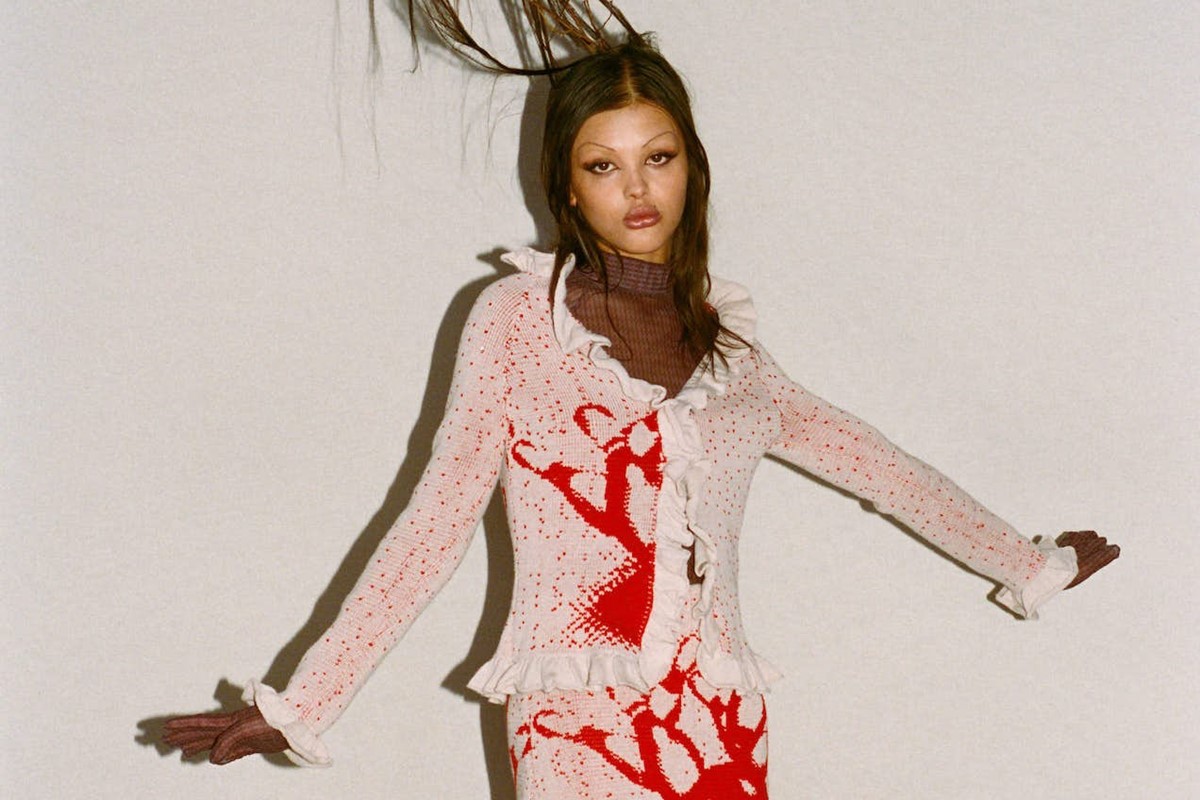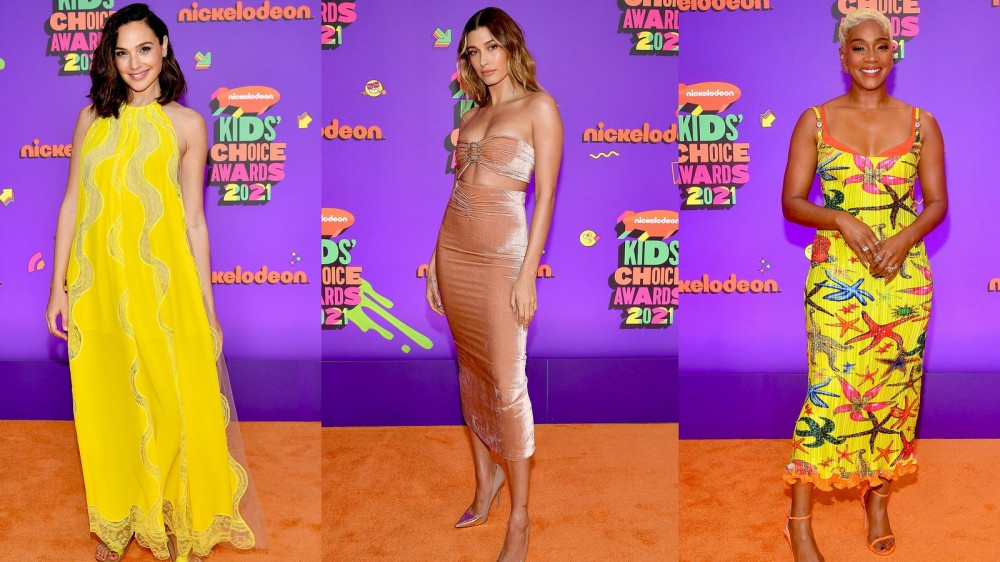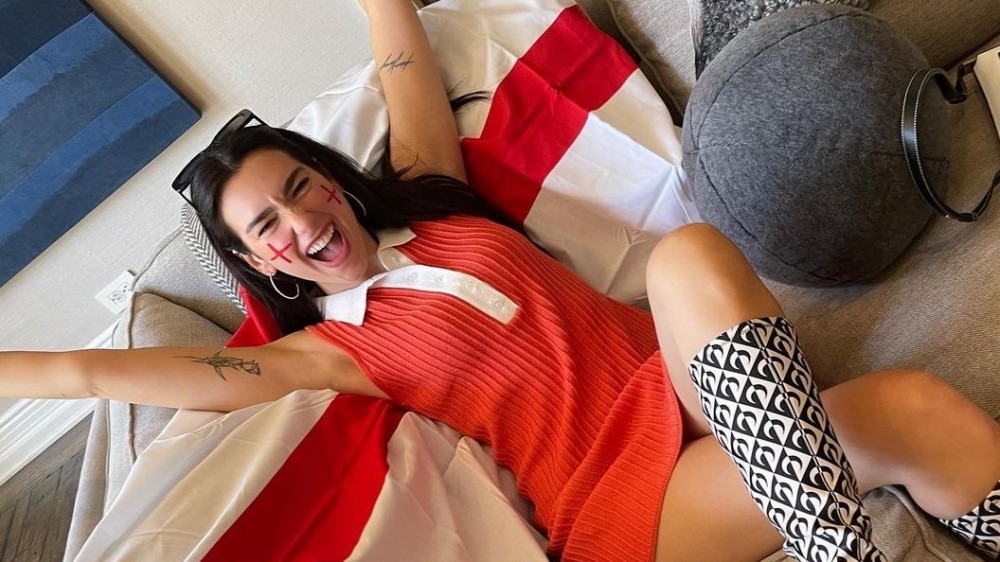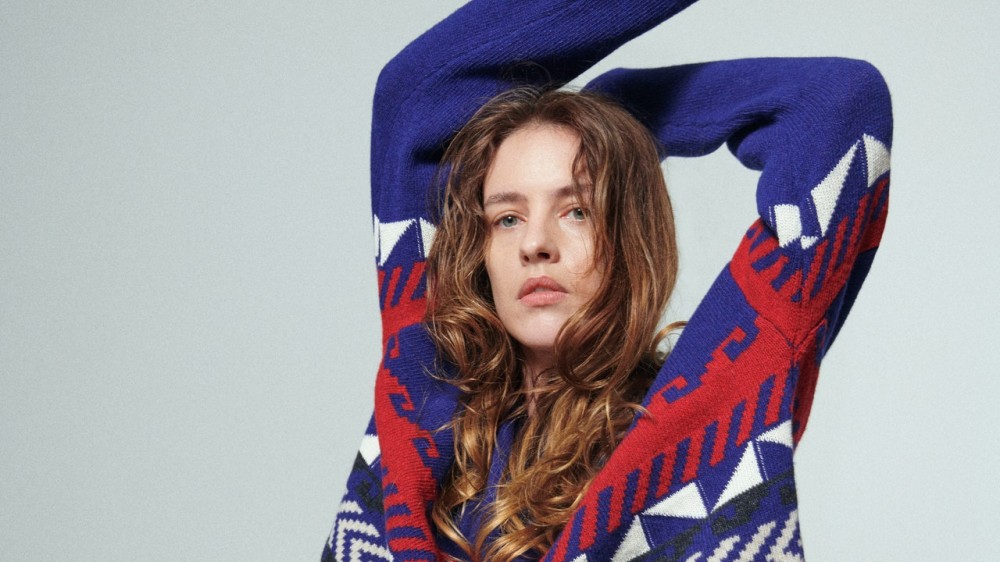
Louise Lyngh Bjerregaard is weaving a sensual new language for the body
The rising Danish designer discusses creating clothes that allow her to articulate what she’s unable to with words
Since its inception in 2006, Copenhagen Fashion Week has cultivated an immediately recognisable signature style. Offering up a smorgasbord of Scandi fashion where pouffy floral dresses, pastel prints, and statement coats both on and off the runway, Denmark’s capital city is full of saccharine looks that are guaranteed to flood your social media – on the limbs of some impossibly put-together influencer – across the course of the season to come. Because of this, those who go against the grain stand out all the more.
Cut to Louise Lyngh Bjerregaard, an emerging designer whose work takes a wholly different tack. Graduating from Central Saint Martins, and with stints at Eckhaus Latta and Anne Sofie Madsen under her belt, Bjerregaard launched her namesake label in 2019. With poetically fragile, stretchy striped knits core to the brand, her body-con silhouettes speak to new ideas of femininity and envelop the body in ways that look both historic and modern, while seemingly random cut-outs offer sensual flashes of skin.




“I have a language in textiles and it expresses things that I don’t know how to articulate with words,” she revealed a few days before her slot on the CPHFW schedule. “I just really love making clothing.”
This ‘language’ extends beyond just the garments themselves, however. Continuing her conversation with the wearer, the designer introduces elements of performance art to the story, and invites them to get involved. Two years ago, she set up a studio in London’s Wood Wood flagship and allowed customers to come watch her work across a two-week period. Those visiting could try knitting on one of her machines, or watch her and her team work fastidiously on a patchwork leather gown, which got its debut as part of her AW21 collection.
After moving to Paris earlier in the year, this offering first got its reveal as part of an intimate, salon-style show during Haute Couture week last month. Since then, however, it’s been kept under wraps until last week, when Bjerregaard made her big Copenhagen comeback. “It took a little bit of courage to accept that, when I come here (CPH), I’m probably going to stand out for my clothes,” she said. “You just have to tell yourself that it’s not a bad thing, even if it sometimes feels really uncomfortable.”
“I have a language in textiles and it expresses things that I don’t know how to articulate with words” – Louise Lyngh Bjerregaard
The collection itself was her most extensive yet, and saw her make good on her vow to break away from knitwear. The brand’s zero-waste policy transpired in the colourful, collage-like upcycled leather – as sourced from furniture companies looking to get rid – and last-of-their-kind deadstock fabrics salvaged from her suppliers. Taking over Charlottenborg’s Art Cinema for the premiere of her Paris-shot film, the designer also offered a glimpse of what went on behind the scenes – bringing a little of the French city’s chaos and couture to the Danish capital.
Ahead of the moment we took our seats in the cinema, we caught up with Bjerregaard, as she opened up about the visceral nature of her work, finding her feet at Saint Martins, and what the future holds for knitwear.
Hey Louise! You moved your atelier to Paris earlier this year. How was that? Have you settled in?
Louise Lyngh Bjerregaard: I have been so well received in Paris. I have had incredible support from the Fédération de la Haute Couture et de la Mode. I was really surprised by that – I was expecting it to be much more of a struggle, but it has been the opposite. And that’s what makes it a good choice, because there will never be a perfect moment to do it. You just have to close your eyes and go for it.
Can you tell us a bit about the SS22 collection?
Louise Lyngh Bjerregaard: This is the first time I’ve built a collection of 32 looks. For me, it shows a wide range of artisanal skills and savoir-faire, of what I’m able to do in different materials and different techniques. And I felt the need to break out of the knitwear label that’s been put on my name. I’m not a knitwear label, I’m just good at it. Actually, I studied at a tailoring school before I began with knitwear.
(…) I actually used knitwear to break free from the rules of constructing and garment pattern-making. That was my getaway to free up some mental space and to explore a different kind of way to create a fabric from scratch, on your own. For this collection, over 90 per cent of the materials are upcycled – for example, a multicoloured patchwork skirt was made out of surplus leather from a furniture company in Copenhagen. A white corset, which is cut out of a vintage tablecloth, was made so it was too small to be closed on the body which gives a feeling of breaking out of it. I also put it out in the rain for a few days because I wanted it to dissolve. My approach was really based on looking at what I have and trying to find solutions in terms of what to do.
“It was kind of like having a spot in the park and then suddenly everyone came and I had to leave. But I must say, I’m not intimidated by so many people doing knitwear. Actually, I’m quite down with it” – Louise Lyngh Bjerregaard, on the explosion in popularity of homemade knitwear across social media
And what about the SS22 film?
Louise Lyngh Bjerregaard: We filmed the runway show in Paris, and I worked with Rune Rask, who usually makes hip hop music, but worked on a catwalk show for the first time. He’s produced for people like Kendrick Lamar, and has lots going on, but we first connected over being introverted in our studios. After eyeing each other for the past 16 years, we grew to become friends, and soon discovered we have a lot of similarities in our approach to creating.
Your work combines performance art with fashion – how does this combination transpire for SS22?
Louise Lyngh Bjerregaard: It works on all different levels. I encourage my atelier to engage in a lot of conversations actually. And not about what could be cool, but more about finding ways of merging elements or how we can translate a certain feeling or disrupt an element of the garment. Should we bring in a sponge? Or a spoon? Part of my approach is that I’m not limited in any materials. They don’t have to be materials suitable for fashion – it could be anything. As for the show, it was definitely a challenge to orchestrate a runway, but it was staged like a performance in a way. The cast was full of such strong individuals and each brought their own personality to the garment and to the way they walked. The clothing I make deserves some movement to it as there is already movement in its design.
You also worked on the casting of the show while I Could Never Be A Dancer choreographed it…
Louise Lyngh Bjerregaard: It was a mix of models and artists which brought an exciting element to it. There was a certain way we wanted them to walk. Some of them wore huge wigs which required them to walk in a certain way for it not to fall off. One of them had lots of branches in their hair, too. But what I wanted to bring forward was this old 80s and 90s inspired dramatic element to the walk where you bring your hips forward and you sell the sex and the garment. I really wanted them to seduce the audience in the way they walked.
In a lot of ways, it broke the usual fashion show comfort zones. Instead of a fast pace, suddenly the models were walking slow and the audience had the time to take in the looks. What happened was that every person gave their interpretation of the walk which meant we ended up having 24 different walks which brought each piece of clothing into a different character. I really love that extension of the performance I had done so far.
From viral TikTok tutorials, to all the Instagram labels popping up, knitwear has definitely become a universe of its own over the past couple of years. What do you think of this revolution?
Louise Lyngh Bjerregaard: It was kind of like having a spot in the park and then suddenly everyone came and I had to leave. But I must say, I’m not intimidated by so many people doing knitwear. Actually, I’m quite down with it. Finally, so many people are getting to know what it takes to do a sleeve, a collar, or all these different techniques. I think that speaks to how fashion used to be back in the day when you people had appreciation of craft or knowledge of what goes into clothing. If the whole DIY, knitwear scene and small labels popping out can create an awareness of the efforts that go into textiles, I’m an absolute fan of it.
How did you end up working with Eckhaus Latta?
Louise Lyngh Bjerregaard: While studying at Scandinavian Academy of Fashion Design in Copenhagen, I started interning with Anne Sophie Madsen. Every day from school I would bike to her studio, and I think she saw I was kinda lonely. She got what I was doing but she told me that I should go out and find someone that will understand what I’m doing and vice versa. Kind of like finding your own textile family – someone who speaks the same textile language. And I do think that both Mike (Eckhaus) and Zoe (Latta) are incredible at textiles – colours, pairings, shapes. They were always so ahead of their time, yet spot on at the same time. I felt welcomed and encouraged, even though I still made mistakes as an intern. But I was showing up every day for months – I really did put in a lot of work.
“I was only at Saint Martins for three weeks and I made friends with the technician there. He knew I didn’t have money because I was always in school while everybody else was out shopping for yarn. So he showed me this closet of yarns that nobody wanted to touch as they were so difficult because they break by just looking at them. I used them in almost all of my clothing” – Louise Lyngh Bjerregaard
What was your experience of studying at Central Saint Martins like?
Louise Lyngh Bjerregaard: I was only there for the summer course because I couldn’t afford to do my studies there. So before and after school, we had to sew furniture for a restaurant in Copenhagen. I kept my money which paid enough for me to do the three week course in knitwear with Sarah Gresty at Central Saint Martins in 2015. I really wanted to explore what knitwear could do for me. I was only there for three weeks and I made friends with the technician there. He knew I didn’t have money because I was always in school while everybody else was out shopping for yarn. So he showed me this closet of yarns that nobody wanted to touch as they were so difficult because they break by just looking at it. And that was the transparent yarn, which is so fragile, that I used in almost all of my clothing.
During that course, I also started doing circular forms on the garments, too. I came there from a tailoring background where I was taught by a teacher that used to work with Pierre Cardin himself. It was this fixed, framed set of how you have to approach the inside of the garments which have to be just as beautiful as the outside. But then also be able to be free at CSM and be encouraged to do it. Those were a really powerful three weeks.
What keeps your creativity going?
Louise Lyngh Bjerregaard: I’m currently working on some show pieces for Ecco Lab out of surplus from their past partnerships they had. It’s about expressing my language through their textiles. And of course, I sometimes make things that I don’t like. But then I just unpick it, wind up the yarn, and make something else.
I think failures are important because they make you actively think about why you didn’t succeed and how you move forward. I had more failures in my life than I had successes and that’s part of the nerve and excitement about creating a new garment. You don’t want that feeling of failure – nobody wants that, it’s horrible. But it’s a part of the game and for me, it’s why I train so much and don’t leave my studio, it’s where all of our clothes are produced. I know I can be better every day, and there are so many more things I want to do.

Author
Violeta Rojo
EDM LOVA



